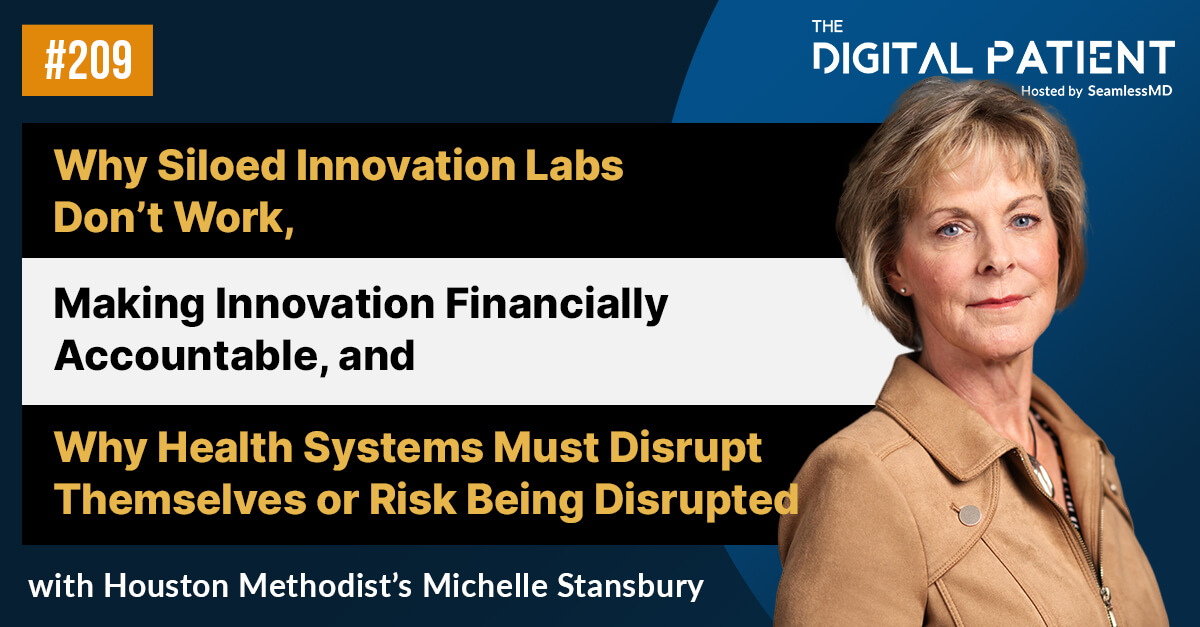Subscribe on: RSS | SPOTIFY | APPLE PODCAST | GOOGLE | BREAKER | ANCHOR
Video:
In this episode of the SeamlessMD Podcast, Dr. Joshua Liu, CEO at SeamlessMD & Marketing colleague, Alan Sardana, review a recent publication from the Journal of Hospital Management and Health Policy, "Technological advances to enhance recovery after cardiac surgery"*. See the full show notes below for details.
*Lobdell KW, Appoo JJ, Rose GA, Ferguson B, Chatterjee S. Technological advances to enhance recovery after cardiac surgery. J Hosp Manag Health Policy 2021.
Guest(s): Dr. Joshua Liu (@joshuapliu), Co-founder & CEO at SeamlessMD
Episode 37 – Show notes:
[0:41] Introducing the articlein review: “Technological advances to enhance recovery after cardiac surgery” byDr. Kevin Lobdell1, Dr. Jehangir Appoo2, Dr. GeoffreyRose1, Brian Ferguson3, and Dr. Subhasis Chatterjee4,5,6;
[3:14] Why technologicaladvancements in surgery are important for solving issues related to costs,risk, and quality;
[4:00] How technology canaddress the Institute for Healthcare Improvement (IHI)’s “Quadruple aim” strategyto address the growing concern for healthcare costs, which are as follows:
1) Better outcomes;
2) Improved patientexperience;
3) Improved clinicianexperience;
4) Reduced costs;
[8:17] Why Dr. Liu believes we focus too much on technology when considering innovations in healthcare, how great innovations are not necessarily technological such as Enhanced Recovery After Surgery (ERAS), which is a model of care where clinical team members are coordinated in delivering effective, standardized & evidence-based protocols proven to help patients recover faster while sparing opioids, and how technology can be used to complement effective innovations for further enhancement;
[17:19] Discussing technologicaladvancement #1: Data as a platform (DAAP) – the foundational component for a technologicalecosystem; a system that compiles data together into one centralized platform;
[20:58] Discussing technologicaladvancement #2: Wearables and the Internet of Medical Things – Devices such assmartwatches that track, with increased reliability & accuracy, variousdata points such as blood pressure, heart rate, heart rate variability, etc.
[21:30] How the StanfordUniversity Apple Heart Study (n=400,000) monitored patients using Apple smartwatches,found 2,161 patients with an irregular heart pulse, and diagnosed roughly 720patients with AF, allowing for earlier diagnosis and treatment of theircondition;
[25:00] How wearables improve patient access to medical information (e.g. patients who are hard-of-seeing can use wearables to track heart rate without needing to see/read);
[26:47] Discussingtechnological advancement #3: Intelligent Computing – Artificial Intelligence capableof sensing, engaging, reasoning, making decisions, and even learning based ondata;
[27:00] How intelligence computing can be divided into three areas: Prescriptive (explaining what we should do), Descriptive (explaining what happened), and Proscriptive (explaining what will happen in the future) and how machine learning is assisting SeamlessMD with real-time readmission prediction and Natural Language Processing (NLP) to reflect common free-text themes that patients discuss back to providers;
[36:43] Discussing technological advancement #4: Complex modeling – When computers use mathematics and physics to simulate complex predictions (e.g. simulating biological systems), and how this technological advancement can support nuanced education for healthcare;
[38:43] Discussingtechnological advancement #5: Simulation (Augmented Reality & Virtual Reality)– A computer-generated simulation of a three-dimensional image or environmentthat can be interacted with in a seemingly real or physical way;
[39:15] How simulationcan be used in Healthcare for education; giving physicians hands-on experience ina variety of situations rather than only teaching the theory behind variousprocedures;
[42:00] Discussingtechnological advancement #6: Virtual assistants – Individuals or technology (e.g.Chatbots) that provide professional administrative, technical, or creativeassistance to clients remotely (e.g. in healthcare: scheduling appointments, navigatinghospital websites, sending reminders);
[47:18] Discussingtechnological advancement #7: Additive manufacturing (i.e. 3D printing) – Theconstruction of a three-dimensional object from a CAD model or a digital 3Dmodel, and how additive manufacturing can help increase efficiency whiledecreasing costs (e.g. in healthcare: building prototypes, custom implants,anatomical models, etc.);
[48:25] Discussingtechnological advancement #8: Telehealth and remote monitoring – An alternativeto face-to-face patient-physician interactions;
[49:15] How the articleauthors view the “four pillars of remote patient monitoring”:
1) Engagement, via videovisits, messaging, collecting patient data, and other pathways;
2) Secure audiovisual(A/V) interface for patients to communicate back-and-forth with theirphysicians and see their own data;
3) biosensors to allowphysicians to collect data in a way that supersedes traditional physical exams;
4) data management &analytics capable of applying AI to collected data;
[55:12] Discussingtechnological advancement #9: Cybersecurity – the state of being protectedagainst the criminal or unauthorized use of electronic data, or the measurestaken to achieve this;
[56:00] How, withincreased volumes of patient data, there is an increased emphasis on security(e.g. two-factor authentication and password managers such as LastPass or1Password);
[57:44] How theaforementioned technological advancements are attributed to various phases ofcare:

Ferguson B, Chatterjee S. Technological advances to enhance
recovery after cardiac surgery. J Hosp Manag Health Policy
2021.
[1:03:17] Why these technological advancements are not intrinsically valuable in and of themselves and need to be successfully integrated into patient/provider workflows to be beneficial;
1Sanger Heart & Vascular Institute, Atrium Health, Charlotte, NC, USA;
2Libin Cardiovascular Institute, University of Calgary, Calgary, ALB, Canada;
3Arena Labs, Westlake, OH, USA;
4Divisions of General and Cardiothoracic Surgery, Michael E. DeBakey Department of Surgery, Baylor College of Medicine, Houston, TX, USA;
5Department of Cardiovascular Surgery, Texas Heart Institute, Houston, TX, USA;
6CHI St Luke’s Health - Baylor St Luke’s Medical Center; Houston, TX, USA;
.svg)









.png)
